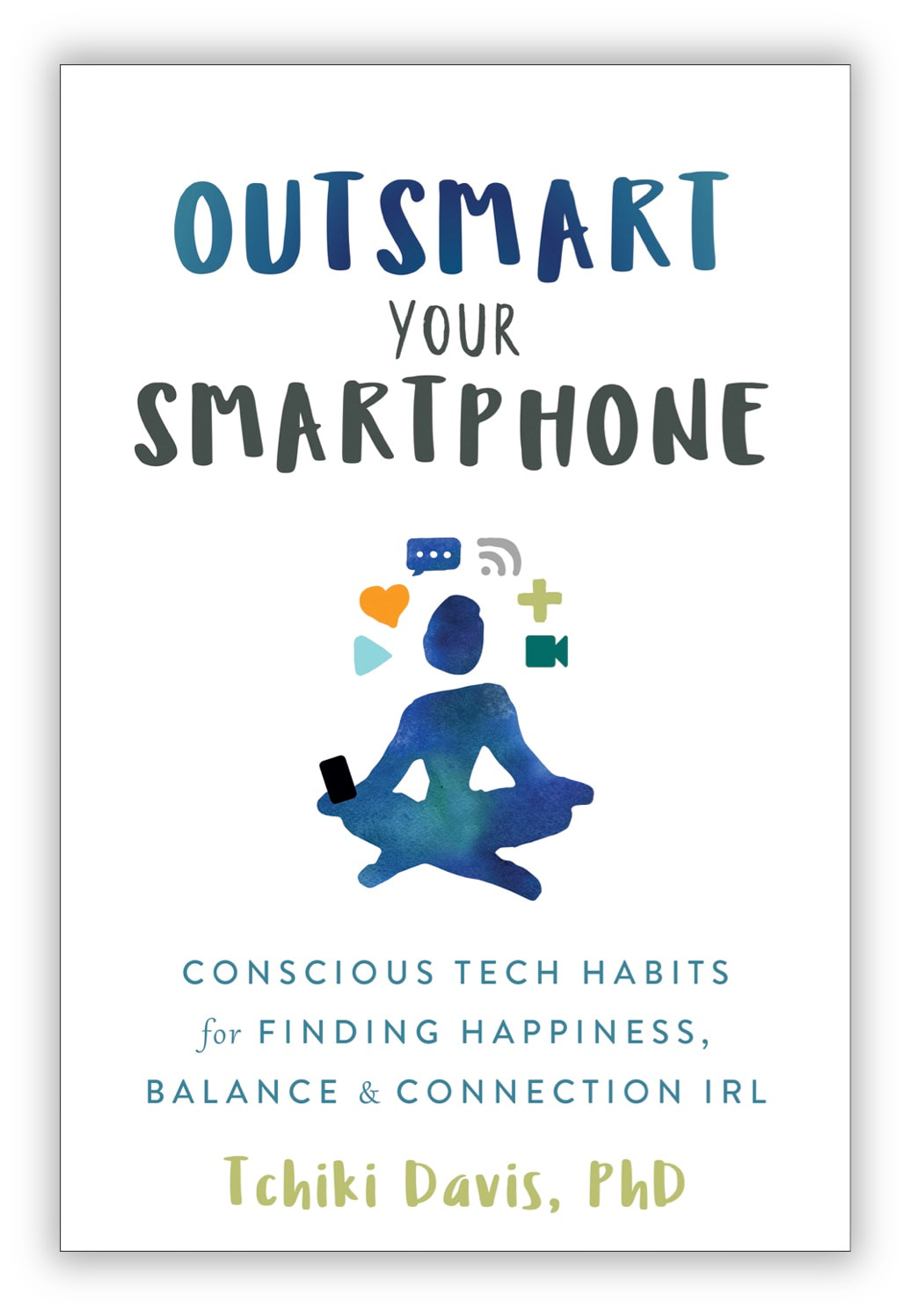How to Calm Down: 11 Tips to Calm AnxietyFeeling stressed out? Need some strategies to calm down? Discover science-based tips to help you calm down an anxious mind and body.
*This page may include affiliate links; that means I earn from qualifying purchases of products.
Stress is a part of life. But learning how to manage it and calm ourselves down can make stress a lot less problematic. So, in this article, we'll explore a bunch of different ways to calm down, reduce anxiety, and de-stress.
Before we get started, we thought you might also be interested in taking our well-being quiz. Or, if you're a well-being entrepreneur or coach, download our Wellness Business Growth eBook to get expert tips, tools, and resources to share with your audience. Are You a Therapist, Coach, or Wellness Entrepreneur?
Grab Our Free eBook to Learn How to
|
|
When we're constantly using our technologies—smartphones, computers, tablets, etc...—our brains are continually active. We're busy learning and absorbing information, much of which can be anxiety-provoking. So, if we're feeling like we need to calm down, taking a short break from technology can help.
If you want some science-based tips for building a healthier relationship with your technology, check out my book, Outsmart Your Smartphone. |
3. Calm Down by Listening to Binaural Beats
Binaural beats are when two tones with slightly different frequencies are played to each ear. Research suggests that listening to binaural beats before a task may help improve performance (Garcia-Argibay, Santed, & Reales, 2019). Further research has shown that listening to calming music reduces cortisol, one of the key stress hormones (Khalfa et al., 2003). This suggests music can be a tool we can use to calm down. It may not take us all the way to where we want to go, but it might help decrease stress hormones and put us in a place where it's easier to relax.
Music: Binaural Beats for Inner Peace
4. Calm Down by Getting Rumination Under Control
It's not uncommon for us to think about the bad stuff. We might replay that horrible interaction we had with a friend over and over again in our minds. Or, we might keep going over what we'll do if the worst happens. But at some point, this is just rumination, and we're better off stopping the thought cycles and taking a break from trying to mentally solve all of our problems.
Unfortunately, it's not always easy to stop rumination. You may have heard the saying, "Neurons that fire together, wire together." Basically, this means that when we think in certain ways, it becomes easier for our brains to keep thinking in those same ways. So when we decide we want to break out of negative thought patterns, it can be tough.
In my experience, some of the best ways to stop these repetitive thoughts involves forcing the brain to focus on something else. I don't just mean will the brain to stop—that rarely works. I mean give it something so distracting that it can't help but change focus. For example, taking a cold shower or doing a few sprints work well for me. And the science suggests that both of these strategies do indeed help calm us down (e.g., Mourot et al., 2008).
Unfortunately, it's not always easy to stop rumination. You may have heard the saying, "Neurons that fire together, wire together." Basically, this means that when we think in certain ways, it becomes easier for our brains to keep thinking in those same ways. So when we decide we want to break out of negative thought patterns, it can be tough.
In my experience, some of the best ways to stop these repetitive thoughts involves forcing the brain to focus on something else. I don't just mean will the brain to stop—that rarely works. I mean give it something so distracting that it can't help but change focus. For example, taking a cold shower or doing a few sprints work well for me. And the science suggests that both of these strategies do indeed help calm us down (e.g., Mourot et al., 2008).
5. Calm Down by Writing in a Journal
Daily journaling, especially about emotional experiences, has been shown in research to result in small but meaningful improvements in mental and physical health (Pennebaker, 1997). Although ruminating about the past and playing it over and over again in your head is not helpful, sometimes writing it all down and getting it out of your head can be. Perhaps that is why journaling can be such a useful tool.
Other types of journaling may help induce feelings of calm or well-being as well. For example, gratitude journaling is a popular type of journaling that has been shown to be beneficial (Kaczmarek et al., 2015). By shifting our focus to the good things in our lives—the things we're thankful for—we can potentially decrease negative emotions and feel a bit calmer.
Other types of journaling may help induce feelings of calm or well-being as well. For example, gratitude journaling is a popular type of journaling that has been shown to be beneficial (Kaczmarek et al., 2015). By shifting our focus to the good things in our lives—the things we're thankful for—we can potentially decrease negative emotions and feel a bit calmer.
6. Calm Down With Positive Visualization
One of my absolute favorite calming strategies is positive visualization (Quoidbach, Wood, & Hansenne, 2009). The cool thing about the brain is that when we imagine or visualize something, it lights up many of the same regions that light up when we're experiencing that thing for real. So, if we imagine we're in a calming place, doing calming things, or around calming people, we can actually feel calmer.
I use this strategy almost every day—sometimes to go to sleep, sometimes to decompress between work and lunchtime, and sometimes just to calm my nerves when I'm feeling tense. If you want to try a guided version of this exercise, check out this happiness visualization exercise.
I use this strategy almost every day—sometimes to go to sleep, sometimes to decompress between work and lunchtime, and sometimes just to calm my nerves when I'm feeling tense. If you want to try a guided version of this exercise, check out this happiness visualization exercise.
7. Calm Down With Outdoor Activities
Nature seems to be one of the best prescriptions for stress. Just getting outdoors for a few minutes per day can be beneficial, but going to the wilderness appears to have notable positive effects on our well-being (Ulrich & Parsons, 1992). And it doesn't seem to be just one thing from the outdoors that calms us.
Outside tends to have cleaner air than indoors, there's often some sunlight, which provides us with vitamin D, and even the scent of trees can be good for our mental health and well-being. So if you have even a few extra minutes, consider spending them in a park reading, walking around the block, or even adventuring in the woods or at the beach. Any or all of these things may help calm you.
Outside tends to have cleaner air than indoors, there's often some sunlight, which provides us with vitamin D, and even the scent of trees can be good for our mental health and well-being. So if you have even a few extra minutes, consider spending them in a park reading, walking around the block, or even adventuring in the woods or at the beach. Any or all of these things may help calm you.
8. Calm Down With Yoga
Yoga has become a popular activity in recent years. For some, it helps them get exercise. Others use it to increase flexibility. And still others use it to calm and relax the body and mind. The calming effect of yoga appears to be more than anecdotal. Research has shown that doing yoga regularly can result in reduced cortisol, a key stress hormone (Thirthalli et al., 2013). So if yoga feels like a good fit for you, it may help you calm down.
9. Calm Down With Some Deep Breaths
Deep breathing activates the parasympathetic nervous system, or our 'rest and digest' system. The parasympathetic nervous system balances the sympathetic nervous system, which is our fight or flight system. So the parasympathetic nervous system is the system in our bodies that is responsible for calming us down when we're stressed, anxious, or angry.
By engaging in some deep, slow, long breaths, we help activate our parasympathetic system and turn down our sympathetic system. Perhaps this is why deep breathing is well known for inducing a sense of calm (Zope & Zope, 2013). Check out the video below for a short breathing exercise.
By engaging in some deep, slow, long breaths, we help activate our parasympathetic system and turn down our sympathetic system. Perhaps this is why deep breathing is well known for inducing a sense of calm (Zope & Zope, 2013). Check out the video below for a short breathing exercise.
Video: Box Breathing Relaxation Technique: How to Calm Feelings of Stress or Anxiety
How to Calm Down From a Panic Attack
Although the techniques we've talked about might also be used to calm down from a panic attack, they don't work for everyone. For some people, relaxation techniques like the ones described above can function more as an experimental avoidance technique—or a way to avoid unwanted negative emotions—and they paradoxically end up increasing emotional distress (Wilson, Barnes-Holmes, & Barnes-Holmes, 2014).
The antidote seems to be to adopt acceptance and passivity (versus control) over the body and mind (Wilson, Barnes-Holmes, & Barnes-Holmes, 2014). In other words, we need to engage in calming or relaxing strategies without focusing obsessively on how well it will work for us or suppressing negative thoughts and feelings. For example, instead of doing deep breathing while we continually ask ourselves, "Do I feel calm yet?" we have to be present, let the emotions come out as they want to, and then fade in their own time.
We calm down when we accept rather than reject our feelings
According to psychologists, relaxation is an act of passive habituation not effortful control (Wilson, Barnes-Holmes, & Barnes-Holmes, 2014). So the simple act of letting the panic attack happen and not trying to control it is, paradoxically, one of the best ways to stop it.
Example of calming down from a panic attack
I know this seems strange, but I've seen this work in my own life. I was stuck in a panic attack once for about 15 minutes unable to stop gasping for air and unable to calm myself down. All my therapist had to tell me was to just sit down and let the panic attack happen. Within a few minutes, I was completely better. It was like magic. I hadn't realized it, but I had been trying to shove all the feelings down to stop them and they just kept boiling over. Then I stopped trying to control it and just accepted what was happening to me. Poof! Panic attack gone.
The antidote seems to be to adopt acceptance and passivity (versus control) over the body and mind (Wilson, Barnes-Holmes, & Barnes-Holmes, 2014). In other words, we need to engage in calming or relaxing strategies without focusing obsessively on how well it will work for us or suppressing negative thoughts and feelings. For example, instead of doing deep breathing while we continually ask ourselves, "Do I feel calm yet?" we have to be present, let the emotions come out as they want to, and then fade in their own time.
We calm down when we accept rather than reject our feelings
According to psychologists, relaxation is an act of passive habituation not effortful control (Wilson, Barnes-Holmes, & Barnes-Holmes, 2014). So the simple act of letting the panic attack happen and not trying to control it is, paradoxically, one of the best ways to stop it.
Example of calming down from a panic attack
I know this seems strange, but I've seen this work in my own life. I was stuck in a panic attack once for about 15 minutes unable to stop gasping for air and unable to calm myself down. All my therapist had to tell me was to just sit down and let the panic attack happen. Within a few minutes, I was completely better. It was like magic. I hadn't realized it, but I had been trying to shove all the feelings down to stop them and they just kept boiling over. Then I stopped trying to control it and just accepted what was happening to me. Poof! Panic attack gone.
Video: 3 Tips to Calm a Panic Attack
How to Calm Down from Stress
It turns out that when we're stressed, our brains don't work so well. Our bodies release cortisol and our sympathetic nervous system turns on. So it can be harder during these times to make good decisions, and it can be more difficult to do the things we need to do.
Dr. Daniel Levitin suggests it can be helpful to do some logical thinking ahead of time so that when we're stressed we'll already have made key decisions about what to do. In the video below, he shares some examples. When it comes to calming down, here are a few more examples of things to do ahead of time.
Dr. Daniel Levitin suggests it can be helpful to do some logical thinking ahead of time so that when we're stressed we'll already have made key decisions about what to do. In the video below, he shares some examples. When it comes to calming down, here are a few more examples of things to do ahead of time.
- You could bookmark a breathing or meditation video on your phone.
- Keep a notecard in your wallet with a list of things to try if you have a panic attack.
- Schedule weekly yoga sessions to keep yourself in a more calm state.
Video: How to Stay Calm When You Know You'll Be Stressed
More Articles to Help Calm You Down
Want to keep learning about how to calm down and boost other positive emotions? Here are some more articles you may be interested in.
- Coloring for Calmness: How to Manage Anxiety with Coloring
- 13 Ways Plants Can Boost Your Health and Happiness
- Tea for Calmness: 10 Teas to Calm Stress and Anxiety
- Positive Emotions: List, 90+ Examples, Theories, & Tips
- Inner Peace: Definition, Examples, & How To Find It
- Calmness: Definition, Quotes, Meditations, & More
- The Wim Hof Method: Definition, Benefits, & Explanation
- Calming Apps: For Anxiety, Sleep, & More
- Feeling Anxious: When Waking Up, at Night, and More
- Nervousness: Definition, Symptoms, & Relief
Supplements to Help Calm You Down
Here are supplements to try if you want to calm down:
Books to Teach You How to Calm Down
We can't possibly cover all the science-based techniques for achieving calm in this article. So here are some good books to take a look at.
- Calm the F*ck Down: How to Control What You Can and Accept What You Can't So You Can Stop Freaking Out and Get On With Your Life
- Acceptance and Commitment Therapy, Second Edition: The Process and Practice of Mindful Change
- Stop Overthinking: 23 Techniques to Relieve Stress, Stop Negative Spirals, Declutter Your Mind, and Focus on the Present
Final Thoughts on How to Calm Down
Stress is a part of life. But learning how to manage it and calm ourselves down can make stress a lot less problematic. So, in this article, we explored a bunch of different ways to calm down, reduce anxiety, and de-stress.
Don't Forget to Grab Our Free eBook to Learn How to
Grow Your Wellness Business Exponentially!
References
- Charmandari, E., Tsigos, C., & Chrousos, G. (2005). Endocrinology of the stress response. Annu. Rev. Physiol., 67, 259-284.
- Garcia-Argibay, M., Santed, M. A., & Reales, J. M. (2019). Efficacy of binaural auditory beats in cognition, anxiety, and pain perception: a meta-analysis. Psychological Research, 83(2), 357-372.
- Kaczmarek, L. D., Kashdan, T. B., Drążkowski, D., Enko, J., Kosakowski, M., Szäefer, A., & Bujacz, A. (2015). Why do people prefer gratitude journaling over gratitude letters? The influence of individual differences in motivation and personality on web-based interventions. Personality and Individual Differences, 75, 1-6.
- Khalfa, S., BELLA, S. D., Roy, M., Peretz, I., & Lupien, S. J. (2003). Effects of relaxing music on salivary cortisol level after psychological stress. Annals of the New York Academy of Sciences, 999(1), 374-376.
- Khoury, B., Lecomte, T., Fortin, G., Masse, M., Therien, P., Bouchard, V., … & Hofmann, S. G. (2013). Mindfulness-based therapy: a comprehensive meta-analysis. Clinical psychology review, 33(6), 763-771.
- Krick, A., & Felfe, J. (2019). Who benefits from mindfulness? The moderating role of personality and social norms for the effectiveness on psychological and physiological outcomes among police officers. Journal of occupational health psychology.
- Mourot, L., Bouhaddi, M., Gandelin, E., Cappelle, S., Dumoulin, G., Wolf, J. P., ... & Regnard, J. (2008). Cardiovascular autonomic control during short-term thermoneutral and cool head-out immersion. Aviation, space, and environmental medicine, 79(1), 14-20.
- Pennebaker, J. W. (1997). Writing about emotional experiences as a therapeutic process. Psychological science, 8(3), 162-166.
- Quoidbach, J., Wood, A. M., & Hansenne, M. (2009). Back to the future: The effect of daily practice of mental time travel into the future on happiness and anxiety. The Journal of Positive Psychology, 4(5), 349-355.
- Thirthalli, J., Naveen, G. H., Rao, M. G., Varambally, S., Christopher, R., & Gangadhar, B. N. (2013). Cortisol and antidepressant effects of yoga. Indian journal of psychiatry, 55(Suppl 3), S405.
- Ulrich, R. S., & Parsons, R. (1992). Influences of passive experiences with plants on individual well-being and health. The role of horticulture in human well-being and social development, 93-105.
- Wilson, C. J., Barnes-Holmes, Y., & Barnes-Holmes, D. (2014). How exactly do I “let go”? The potential of using ACT to overcome the relaxation paradox. SAGE Open, 4(1), 2158244014526722.
- Zope, S. A., & Zope, R. A. (2013). Sudarshan kriya yoga: Breathing for health. International journal of yoga, 6(1), 4.
Are You a Therapist, Coach, or Wellness Entrepreneur?
Grab Our Free eBook to Learn How to Grow Your Wellness Business Fast!





